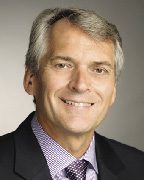Storrs Center is a $220 million mixed-use, town center and main street corridor development at the confluence of the town of Mansfield and the University of Connecticut. Strategically located along Storrs Road, the development is adjacent to the university, the town hall, the regional high school and the community center. At its heart is a town square of approximately 1¼ acres, created by relocating Dog Lane, which was done to assist in realigning an existing offset intersection at Bolton Rd. The concept behind the development is to create a pedestrian-oriented environment by weaving appealing architecture, public spaces, and a variety of retail and service occupancies into a fabric of small connected neighborhoods.
With an eye toward new urbanist thinking and environmental sensitivity, the proposed development will use only 17 acres out of the 45-acre parcel, favoring density over sprawl. Ground floor retail spaces opening onto broad, landscaped sidewalks and intimate streets will animate the neighborhoods and support the residential apartments on the floors above. Restaurants and office space will enrich the "live-work-play" style of the community.
Storrs Center is one of the most ambitious public-private partnerships in the history of the state, without which it could not possibly be undertaken because the rents simply would not support the infrastructure costs such as roads, utilities and a parking garage. The driving force behind the project's public interest is a team made up of the Mansfield Downtown Partnership, Inc., - an independent, nonprofit organization made up of representatives from the community, local businesses, the Town of Mansfield and the University of Connecticut - and the Storrs Center Alliance, LLC - the master developer, an affiliate of Leyland Alliance LLC, from Tuxedo, N.Y. Education Realty Trust, Inc. (EdR), from Memphis, Tenn. has joined with Leyland Alliance in developing the residential components in the first two phases of the work. Individually, the entities that make up these stakeholder groups each had its own ideas about what the development should be, but collectively they had the drive and commitment to work together over 10 years to create a shared vision.
Groundbreaking occurred in May 2011. The first phase will be complete this August with 127 apartments and 28,000 s/f of shops and restaurants. This is the first step in creating a sense of place and a thriving community of several small neighborhoods around the town center that unites the Town of Mansfield and the University of Connecticut. When complete it will contain a blend of restaurants, shops, offices, homes, walkways, and green spaces.
Built in the midst of this depressed economy, the project has created many jobs and planted the seed for continued growth and employment. In spite of the economy, the retail spaces are almost entirely pre-leased, with several being local enterprises. Tenants include Insomnia Cookies, Dog Lane Café, Select Therapy, Storrs Automotive, Moe's Southwest Grill and Geno's Restaurant, a perfect venue for coach Geno Auriema's newest endeavor. This is urban-style retail, rather than what you would expect in a more suburban or rural area where adjacent parking fields would support the stores. Here there is curbside parking supported by a nearby parking garage. The parking garage is tucked behind the next building to be constructed for minimal visual impact, and will reduce the need for vehicular traffic since the town center is compact and walkable. It will also have an attached multimodal transportation center where buses will connect with the parking garage and bicycle parking. The emphasis here is on traffic calming measures and pedestrian friendliness. Residential spaces are also in high demand and are entirely pre-leased. The buildings provide a mix of one, two, and three-bedroom apartments. This was not created as student housing, but as market rate housing for the community at large. One interesting feature of these buildings is an indicator of housing's future. There are no phone lines. Tenants are using cell phones for their calls rather than land lines. The emphasis here is on data. In the interest of enhanced speed, each data outlet is wired directly back to the internet router. Apartments are now competing for tenants on the basis of technology such as data bandwidth and connection speed.
As the development grows, the Town of Mansfield and the University will have a true town center and a sense of place.
Rainer Muhlbauer, AIA, LEED AP BD+C, is director of architecture for BL Companies, Meriden, Conn.
Tags:
Storrs Center - A public-private partnership success with an eye toward new urbanist thinking
July 19, 2012 - Connecticut









